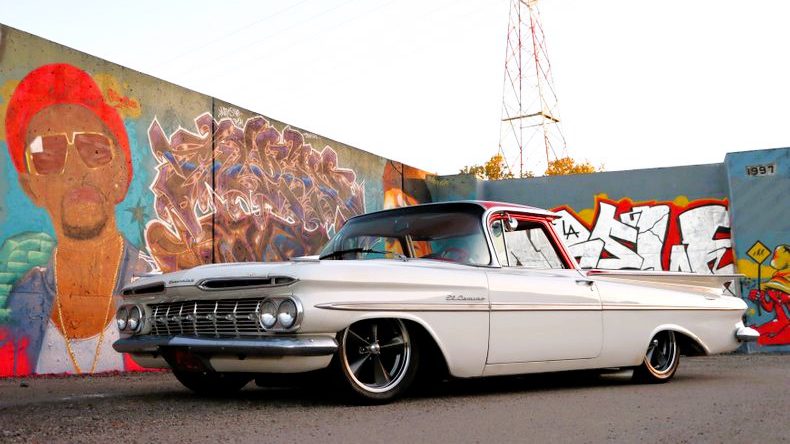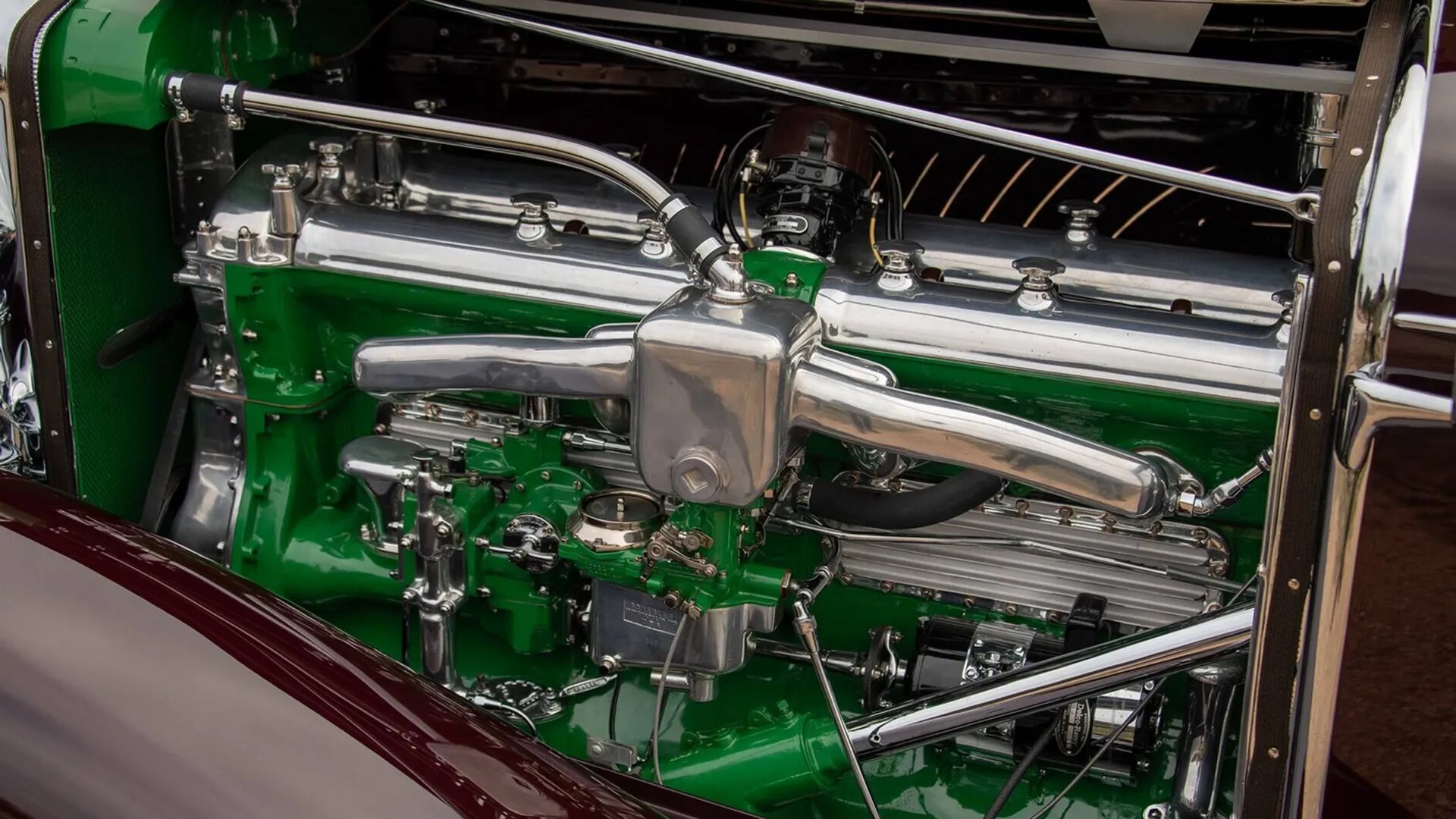Collectible trucks are as hot as ever. Coming from all eras of production, these once hardworking vehicles are now in the hands of enthusiasts poised to preserve them or make them better than they ever were.
Right now, on Hemmings.com, we’ve got plenty of trucks available from Hemmings Auctions and Make Offer listings. Below are six collectible trucks that we think are pretty cool that capture the spirit of style, performance and moving cargo. From the 1950s, up to and including modern 21st century machines, these all-American V8 machines look ready to show, cruise or haul.
Two-Owner 1996 GMC Sierra 1500 SLE Club Coupe 4×4 Pickup
![1996 GMC Sierra 1500 SLE Club Coupe 4x4 pickup, front quarter]()
Vermont is a beautiful place. Great skiing. Stunning views as the trees change colors in the fall. Covered bridges that are used every day. And the best maple syrup in the world. Sorry, Wisconsin, you might win on beer, but Vermont gets the trophy for maple syrup.
What’s decidedly not great about Vermont is the volume of salt used on the roads. And it’s not just to melt snow and ice in the winter. They even sometimes use a calcium chloride solution to tame dust on the many dirt roads during the warmer months. The tin worm might as well be the official state animal. So, when we see trucks like this 1996 GMC Sierra 1500 4×4 pickup, we take notice.
With just two owners, less than 130,000 miles on the odometer, and a Carfax history showing only Oregon and Louisiana registration, it’s no wonder this four-wheel-drive pickup looks so clean. According to the seller, it hasn’t been restored, the paint is original and the 5.7-liter, 250-hp/335 lb-ft Vortec V8 under the hood is also the factory installed powerplant.
The seller has included a picture of the original window sticker showing a rather extensive list of options that were ordered on the truck when new, including the right side third door for rear seat passenger access, a 3.73 axle ratio with a rear locking differential, off-road chassis, remote keyless entry, A/C, tilt steering wheel, cruise control, power locks, power windows, and much more. About the only change from new is a set of more recent 20-inch alloy wheels from a Denali-spec truck.
Restored and Customized 1980 AMC Jeep J10 4×4 Pickup
![1980 AMC Jeep J10 4x4 pickup, front quarter]()
Sometimes forgotten among the domination of the truck market by the Big Three, Jeep made its own line of full-size trucks right up through the merger with Chrysler in 1987. Originally sold as the Gladiator from its introduction in 1962 before becoming known as the J-Series trucks in the 1970s, it had the J10 moniker for short-wheelbase models and J20 for the long-wheelbase versions. Amazingly, Jeeps corporate parentage during the production run included Willys Motors, Kaiser-Jeep, American Motors Corporation and eventually, albeit briefly, Chrysler Corporation.
With styling that echoed the contemporary and related Wagoneer models, the J10, like so many Jeep and AMC products, cut its own, distinctive look that helped it stand out from contemporary trucks from GM, Ford or Dodge. This customized 1980 Jeep J10 features an AMC 360-cu.in. V8 that the seller reports as original while also noting a recent rebuild and a host of aftermarket upgrades, such as a 650-cfm four-barrel carburetor, a new camshaft and Hedman exhaust headers. The Chrysler-sourced TorqueFlite 727 three-speed automatic has also been treated to a rebuild, according to the seller.
Other elements of the restoration process listed by the seller include fresh tan bedliner paint on the body, with black accents and a black bedliner, new upholstery on the bench seat with fresh foam underneath, a “full complement of aftermarket Equus gauges,” and more. The Flaming River tilting steering column is topped by a billet-style aftermarket steering wheel.
2012 Chevrolet Colorado LT3 Extended Cab Pickup With a 5.3-Liter V8
![2012 Chevrolet Colorado LT3 Extended Cab pickup, front quarter]()
If there’s one thing most car guys can agree on, it’s that more power is better. And if that happens to be a bigger engine in a smaller vehicle, then there’s even more to like. The vast majority of Chevrolet’s first-generation compact Colorado pickups, from the 2004 to 2012 model years, were built with four and five-cylinder engines. But a small fraction of them were built with a version of GM’s Vortec 5.3-liter V8.
In this 2012 Chevrolet Colorado Extended Cab pickup, the LH9 V8, with continuously variable valve timing, managed to produce 300 horsepower and 320 lb-ft of torque on regular unleaded gasoline. One magazine test reported the 0-60 mph sprint at 6.7 seconds and the quarter mile at 15.1 seconds At 92 mph for a similarly-equipped 2009 Colorado, though its LH8 V8 did not have variable valve timing. Still, the numbers are impressive for a small truck, particularly one with a 6,000-pound towing capacity.
This example in 3LT trim is also equipped with the ZQ8 Sport Suspension, which included body-color bumpers front and rear, a black front air dam, a sport-tuned suspension, a quick 14.5:1 steering ratio, and 18-inch aluminum wheels. With the suspension 1.1 inches lower, step-in height for ZQ8-equipped trucks was more than three inches lower than the standard setup and almost six inches lower than the Z71 off-road package allowed for. The seller—and original purchaser—of this Colorado adds that he installed a set of coilover shocks in front, lowering blocks with new shocks in the rear and a “stealth” crossmember for rigidity. He adds that the modifications are all bolt-on and can be reverted to stock on this 52,136-mile example.
Custom 1957 Chevrolet 3100 Series Stepside Pickup With a 350 V8
![1957 Chevrolet 3100 Series pickup, rear quarter]()
As the listing for this modified 1957 Chevrolet 3100 half-ton pickup points out, “1955-’57 Chevrolet pickups are right up there with the 1953-’56 Ford F100s as the trucks that jumpstarted the custom classic pickup hobby.” This restored ’57 3100 street rod is noted by the seller as having been most recently refinished in 2020, in a shade that seems to be candy apple red, that shines brightly in the photos provided for the listing.
The powertrain is a classic street machine setup: a recently rebuilt Chevrolet small-block V8 backed by a 700R4 four-speed automatic from Monster Transmission routing power to the rear wheels via a Ford 9-inch rear end with 3.55:1 gears. A Mustang II-style front end with power-assisted steering works with a four-link rear end augmented with coilover shocks. Power-assisted Disc brakes at all four corners handle the stopping.
Seemingly nothing was left unmodified in this truck, including the interior that features a pair of bucket seats, Vintage Air A/C, Dakota Digital gauges, and Lokar components for the shifter, pedals and door handles. There’s no radio, but a Bluetooth-capable audio system that includes a 10-inch subwoofer.
Mopar Muscle Truck: 2003 Dodge Dakota R/T Club Cab Pickup
![2003 Dodge Dakota R/T Club Cab pickup, front quarter]()
Like the Colorado V8 detailed above, Dodge followed the tried-and-true muscle car formula of installing a bigger, more powerful engine in a smaller platform with the Dakota R/T, a mid-size truck with a full-size engine under the hood. Dodge had previously offered the Dakota with a 5.2-liter (318-cu.in.) V8 before it engineered the R/T in 1998 with the 5.9-liter (360-cu.in.) Magnum V8, a capable engine rated at 250 horsepower and 345 lb-ft of torque.
Rear-wheel drive only, the R/T also included some suspension mods from the standard Dakota to match the new level of power. Firmer shocks were joined with firmer springs, the latter also accommodating a near one-inch lowered stance. Alloy wheels with low-profile 17-inch tires and front and rear stabilizer bars also added to the handling performance, which was praised by the road test reviews of the day. A 3.92:1 limited-slip rear axle helped deliver 0-60 mph times in the low seven seconds and the quarter-mile at 15 seconds and 90 mph. The R/T’s performance was a substantial step up from any other mid-size truck of the era.
This 2003 Dodge Dakota R/T Club Cab is noted in the listing as being one of just 1,239 R/Ts delivered that year, including just 115 Club Cab models in Bright Silver. This under 39,000 mile example has minimal modifications, including a K&N cold-air intake, a 3-inch cat-back exhaust and a Flowmaster muffler. Aftermarket wheels measure 17 inches.
Restored and Upgraded 1972 Chevrolet El Camino SS Tribute
![1972 Chevrolet El Camino SS tribute, front quarter]()
Chevrolet’s El Camino outsold its competition from Ford nearly two to one. And though the Ranchero came first, the Elco stayed on the market for nearly a decade longer. That love for Chevrolet’s car-base truck seems to remain as strong as ever.
Not every El Camino was an SS model of course, but that doesn’t stop enterprising builders from creating their own equivalent. While this 1972 Chevrolet El Camino SS tribute is not exactly an authentic copy of an original, it certainly appears to capture the spirit of Chevy’s muscle truck of the era. In place of the original two-barrel 350 (as indicated by the “H” in the fifth position of the VIN), there is now a modified 350-cu.in. V8 with an Edelbrock four-barrel carburetor atop an aluminum intake manifold. Aftermarket air cleaner and rocker covers also adorn the engine bay and the V8 features dual exhaust.
Finished in a Mercedes-Benz shade called Sienna Grey Metallic that was reportedly applied in 2023, this El Camino also sports a “complete SS dashboard” and new black vinyl upholstery, new carpet, and a new headliner. Photos provided by the seller show a clean underside and engine bay indicative of a thorough restoration.


